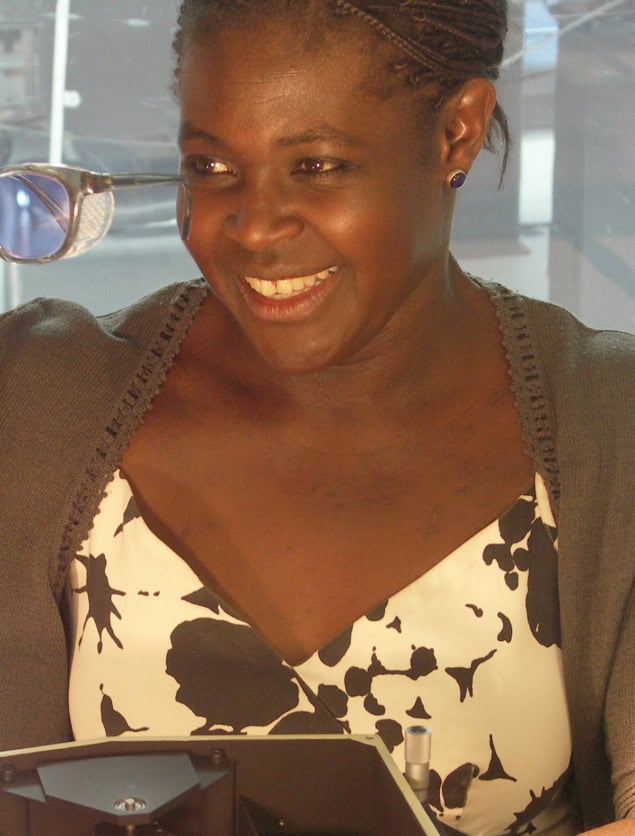What can we do as individuals to make physics a more inclusive environment? Jenni Dyer shares her top five tips

Research by the global consulting firm McKinsey & Company, published in its 2015 Diversity Matters report, shows that there is a positive correlation between more diverse companies and good financial performance. Companies with greater gender diversity were found to outperform their national industry median by 15% and those with greater ethnic diversity by 35%. Conversely, companies in the bottom quartile for both gender and ethnicity were actually seen to be lagging behind their competitors. In the UK, the highest uplift of earnings before taxes corresponded to companies with greater gender diversity at senior levels. The key message is that a more diverse workforce corresponds to higher financial returns.
While these are correlations and not causation, the McKinsey report hypothesized that this was because the more diversity within a company, the more it is making the most of the top talent. In short, if a firm recruits from the widest possible talent pool and retains and promotes the most talented people, it will not only have higher levels of employee satisfaction and decision-making but will also reap financial benefits.
But how does this translate to physics? In the UK, once students move beyond compulsory education (after age 16), those studying physics no longer reflect the diversity of the general population. UK government data show that just 20% of those taking A-level and undergraduate degrees in physics are girls. Students from black ethnic groups are roughly half as likely to take A-level physics as those from other ethnic groups. Students from the highest socioeconomic backgrounds, on the other hand, are not only eight times more likely to take A-level physics than those from the lowest, but they are also 20 times more likely to get an A.
We need to think seriously about whether we are doing enough to attract, recruit and retain the most talented potential physicists
It can be easy to dismiss this vision as something we, as individuals, have no power to influence. However, there are things we can do, on both a personal and organizational level, to change physics for the better. In my time working on the Diversity Programme of the Institute of Physics (IOP), which publishes Physics World, I have been involved with collecting data, examining the research and running initiatives on diversity in physics. Here I highlight my top five tips that I think can help all of us really tune in to our physics talent.
1 Do the research, check the science
There is a widespread notion that gender differences are innately wired and that boys and girls have different brains. You only have to look at how companies market toys by gender to even the youngest babies to see how entrenched the notion of innate gender differences is. However, the latest neuroscience studies show that there are as many differences within the genders as there are between the genders. In brain terms, the science seems to be saying that there is not really such a thing as a “typical” boy’s brain or a “typical” girl’s brain. So let’s start squashing the notion completely that you have to have a “boy’s brain” to do physics or that physics is, somehow, a “boy’s subject”.
But it’s not just gender differences that we need to think about. As the ASPIRES project run by King’s College London in the UK discovered, people hold very strong beliefs – even children as young as 10 think that you have to be really clever to be a scientist. We need to make sure children are not opting out of physics simply because they do not think they are clever enough. So do the research, check the science and start challenging assumptions about brains.
2 Be your own community builder
It is easy to think of diversity, equality or inclusion as being someone else’s job, problem or issue to tackle. But you don’t have to wait to be invited. One of the first places to start is to consider your own community and networks. What are your networks like? Look around the room. Does everyone look (more or less) like you? Do you always network with the same people, go to conferences with people with similar views and so on? You can start by changing the way you behave.

Instead of always chatting to the same people over coffee, look for someone completely different. They may be young, or old, of a different ethnicity or gender, or disabled. Or, think about who’s not there – are there people who don’t attend coffee, lunches and so on? You can join a new network and work with others, be an ally for a particular under-represented group, join a social-media campaign, a group such as your local ScienceGrrl chapter, or find out more about the work the IOP is doing and get involved in that. Make your own invitation and build new communities.
3 Think about your own attitudes, and get tested!
The words “diversity” and “inclusion” are often used interchangeably, but they mean different things. Generally, diversity can be thought of as the way in which we all differ – our different characteristics, backgrounds, beliefs, ages, genders and so on. Inclusion means actively involving and engaging with those differences to ensure that people’s distinct skills, experiences and perspectives are valued and supported so that everyone can contribute to the work or learning environment.
Essentially, diversity means acknowledging that we are all different and inclusion means ensuring that those differences are not a barrier to studying, being offered a job or promotion or to taking part in activities. Understanding this also means thinking about how your attitudes and opinions shape the way you include (or not) those from different groups. Everyone has unconscious biases – even me – and you can test yours using Harvard University’s Implicit Association Tests (see “So you think you’re not biased?” pp39–42). Take a few of these tests to find out more about yourself, and then do some training and reading up about unconscious biases and how to minimize the impact they have on the decisions you make. Recognize that being rushed, stressed, tired or hungry can all have an impact on how you make decisions. Take a personal journey and encourage others to do the same. After all, we all want to feel included and it’s no different for physicists.
4 Know your metrics
In any organization, being able to identify and measure the extent of your progress is important, but you need to know your baseline first to see how well you are doing. Understanding what the characteristics are of those who are currently part of your organization or community will enable you to understand where you need to target your action for change. Gather data and evidence to see what the issues really are, to avoid making wrong assumptions about who your minority groups are.
Once you have defined who or what you want to measure, you need to work out a way of doing this. How many students or staff did you recruit from minority groups last year? What are the proportions that applied, were interviewed, were offered, that accepted? Are these proportions the same? How many women returned from maternity leave? How many men took paternity leave? How many disabled staff do you have? How many speakers from minority groups did you invite to events last year?
Know your key metrics and be inquisitive about them. This will allow you to really think about where your short-, medium- and long-term cultural change is going to come from. Develop a personal action plan for change or an organizational one. Work out who is going to do what and when and ensure they are responsible and accountable for it. Measure, monitor, review, progress.
5 Don’t go on automatic pilot
When Liz Whitelegg and others from the Open University conducted their Invisible Witnesses research, they found that female scientists in children’s TV programmes were few and far between. And when they asked young children to draw a scientist, most pictures were of men, wearing a white lab coat, and usually with safety goggles on. Where are children getting these messages from? Who are our role models in physics and how are we promoting them? How many role models from under-represented groups do you actually know of?
Every time you meet someone who challenges your stereotype and bucks the “norm”, remember them for the future so that you can bring out examples of people from under-represented groups to help reinforce this in others. Try to use them as often as possible and think of them when you are writing articles, inviting speakers or giving talks. Such steps will help to recognize, celebrate and champion the achievements of a rich diversity of physicists, and provide a positive feedback loop.
To find out more about the IOP Diversity Programme, visit https://www.iop.org/about/IOP-diversity-inclusion



